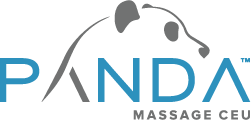Pregnancy Massage: A Massage Therapist’s Guide
- September 14, 2018
- Posted by: massageceu
- Category: Adaptive massage techniques Pregnancy massage

Your Guide to Pregnancy Massage
As a massage therapist, you have the opportunity to work with all sorts of clients. Some of them come in due to chronic pain, including issues with their lower back, neck, shoulders, or other areas of the body. Other clients seek you out due to acute injury, and your job is to assist them in their recovery. Additionally, some clients need more specialized services such as sport massage. Across the board, though, you get to work with a wide range of individuals with unique needs. The ability to work with such a diverse client population is one of the best things about being a massage therapist, in fact. And nowhere is this truer than when you’re able to offer pregnancy massage to an expecting mother.
It’s a common feature of a therapeutic session for any client that you’re attempting to offer them pain relief and/or assist them in recovering from some sort of injury or other discomfort. With pregnancy massage, though, you’re doing more than simply relieving someone’s aches and pains. You’re aiding in ushering a new life into this world. It’s a truly special experience, but it also carries with it a serious responsibility. If you’re going to offer prenatal massage to an expecting mom, you’ll need to ensure that you know what you’re doing.
While some massage schools offer a little bit of training in pregnancy massage, it’s rarely something that a massage education program will cover in great detail. Of course, we still recommend as one of our massage study tips that you include some review of pregnancy massage-related material when studying for the MBLEx exam, as there will likely be at least one question on the test related to massage therapy offered to clients during pregnancy. That said, though, many graduates of the typical massage therapy program are still a bit unfamiliar with prenatal massage.
If you haven’t received professional training in prenatal massage and want to incorporate it into your therapeutic practice, we highly recommend seeking out specialized training and education in the area. There’s no substitute for professional training, and we won’t claim that the information offered in this article is enough to prepare you to offer this service to your clients as a massage professional. Instead, this guide is intended to give you an overview of pregnancy massage. Below, we’ll touch on the following topics:
- What is pregnancy massage?
- Benefits of pregnancy massage
- Special considerations for offering pregnancy massage
- Education for massage therapistsF
- Ethical considerations
- How to position the client
- Marketing yourself as a pregnancy massage therapist
Ready to learn more about pregnancy massage? Let’s get started!
What Is Pregnancy Massage?
Before we go any further, let’s take a moment to answer an obvious but important question: what exactly is pregnancy massage?
Also known as prenatal massage, pregnancy massage is quite similar to standard forms of massage: its goal is to aid in relaxation, reduce muscle soreness, improve circulation, and more. In addition to these common features of any massage session, though, pregnancy massage is especially suited to the needs of pregnant women. It involves considering certain contraindications, including areas of the body where lighter pressure will be needed. It focuses on specific areas that are particularly sore during pregnancy, such as parts of the back, neck, shoulders, and pelvis area. Additionally, it takes into account special table positioning considerations related to the particular stage of pregnancy that a client is in at the time of their session.
Pregnancy can be a difficult time, particularly for first time expecting mothers. Offering massage therapy to soon-to-be moms can be an incredibly rewarding experience. That said, it’s important to understand the benefits specific to this client population. Let’s take a look at some of the benefits of this form of massage.
The Benefits of Pregnancy Massage
As a massage therapist, you’re probably already accustomed to describing the potential benefits of massage to both new and existing clients. However, prenatal massage carries with it some potential benefits that can be especially helpful for women experiencing the discomfort associated with the prenatal period.
Amongst the possible benefits associated with prenatal massage, clients may experience:
- A decrease in anxiety
- Improved ability to sleep
- Lower levels of stress hormones such as norepinephrine
- Reduction in pain in the back and legs
- Increases in hormones related to mood improvement such as dopamine and serotonin
- Reduced levels of cortisol
- Improved mood and energy
- Improved immune system response
- Reduced swelling, particularly in the joins
- Reduction of nerve pain associated with sciatica
- Lowered levels of muscular tension
- Relief from headaches
- Better oxygenation of muscles and soft tissues
Some of these items are particularly troublesome issues for expecting mothers. For example, many women experience difficulty sleeping during pregnancy. Lack of sleep can then cause dysregulation of stress hormones such as cortisol and norepinephrine, leading to increased levels of stress in clients. Pregnancy is already a stressful and challenging experience in and of itself, and lack of sleep and hormonal changes can make this existing stress worse. Additionally, pregnant women offer suffer from pain in particular areas, such as sciatic pain. Prenatal massage can offer relief from this discomfort. Many pregnant women also find that they experience swelling in certain joints, often due to the uterus applying high levels of pressure on the blood vessels and thus disrupting the circulatory system.
Prenatal massage is capable of providing relief from all of the above issues and more. As you can see, offering this form of therapy to your clients means that you’ll be able to play a major role in assisting them with some of the challenges that they’ll inevitably experience. However, there are a number of special considerations to take into account when attempting to offer this type of massage therapy to clients. Let’s take a look at some of them below.
Special Considerations for Offering Pregnancy Massage
When it comes to massage therapy, you’ll recall from your educational program that certain client populations carry with them special considerations that you need to take into account when offering your services to that population. For example, elderly clients or clients suffering from acute injuries will carry with them different considerations than, say, a client seeking out sport massage.
When it comes to expecting mothers, there are a number of special considerations and contraindications that you’ll need to take into account. While we can’t cover all of them in depth in this blog article, we’ll touch on several of them here.
Frequency of Prenatal Massage
You likely already know from your education and/or experience as a massage therapist just how important of a role frequency plays in the effectiveness of massage therapy. If clients come to see you on a regular basis, they can expect significantly better results than clients who come to see you once a year (or even less, perhaps).
Sticking to a regular schedule is particularly important when it comes to prenatal massage. Both mother and baby will get the greatest benefit as a result of coming to see you on a regular basis. Women can experience a significant amount of pain and discomfort during pregnancy, and setting up a regular schedule with you is a great way for them to obtain relief from this discomfort on an ongoing basis.
When someone comes to see you for their first session as an expectant mother, it’s a good idea to spend some time educating them about the importance of scheduling regular sessions if they want to derive the maximum benefit from pregnancy massage. Of course, budgetary and time restraints may delimit the number of times that a client can come to see you. Generally speaking, though, more is usually better (within reason, of course).
Ethical Considerations
Being a massage therapist comes along with a whole host of ethical considerations. You learned about these during your massage therapy program, and they should be in the back of your mind on an ongoing basis as a practicing massage professional.
That said, you may find that your ethics are put to the test when it comes to working with pregnant clients. Many of your expecting clients will be having their first child, and going through pregnancy for the first time can be an anxiety inducing, difficult experience. It’s common for clients to have lots of questions related to their pregnancy. They may pose some of these questions to their doctor, of course; but, if they perceive you as an expert — particularly as a “medical expert” — there’s a good chance that they’ll put some of these questions to you, too.
If a client starts asking you questions related to their pregnancy, however, it’s important to inform them that assisting them with those questions and concerns is, unfortunately, outside your scope of practice as a massage professional. While it might be tempting to answer questions related to pregnancy when they’re posed to you — particularly if you’ve had a child yourself, and have been through the experience your client is asking about — it’s important to remember your scope of practice limitations as a massage therapist.
It’s also easy to go beyond the boundaries you’d normally set for clients when working with expecting mothers, as you can feel pulled to go the extra mile. As a client going through pregnancy comes to see you on a regular basis, you’ll see their baby developing — and you’ll also likely see the client experiencing greater levels of discomfort and impaired mobility. Before you know it, you could be going over the time limit on sessions or offering to work outside of your normal hours. It’s important to respect the professional boundaries that you’ve set for your practice, as self-care is an important part of being able to provide optimal care to your clients over the long haul.
How to Position a Client During Pregnancy Massage
Positioning is always an important consideration for any client. As a massage therapist, you can never take it for granted that a client can assume a certain position on the massage table. Depending on their level of pain or discomfort — or perhaps as a result of reduced mobility — you often have to find ways to work around limitations related to patient positioning.
That said, positioning is especially important with pregnant clients. You may need to have clients lie on their side in order to access their back appropriately, as lying prone may not be a possibility. Or, you may have to use special cushioning in order to assist in prone positioning. Remember, too, that the particular stage of pregnancy a client is currently experiencing has a lot to do with the sort of positioning you’ll need to do. For example, it’s typical to position clients on their side for massage from the second trimester onward.
Positioning isn’t just a consideration for your client, either. Keep in mind that if you’re not used to working with patients in special positioning (such as on their side), you may adopt certain techniques and habits that can contribute to wear and tear on your own body. Remember to stay aware of how you’re feeling during a session, and take care of your back, neck, shoulders, and joints.
Education for Massage Therapists
As we’ve mentioned above, there’s a lot to think about when offering massage therapy to pregnant clients. We can’t stress this point enough: if you haven’t received special training related to pregnancy massage, we highly recommend that you seek it out. There are many more things to consider when offering prenatal massage than just the items mentioned here, and it’s important to educate yourself extensively before you begin to work with this client population.
Marketing Yourself as a Pregnancy Massage Therapist
Once you’re properly trained and able to offer prenatal massage as part of your massage therapy practice, you may want to consider marketing yourself as providing this service. There are all sorts of options out there if you want to market your pregnancy massage services. You can tailor your online presence to mention prenatal massage frequently, focusing on SEO (search engine optimization) targeted as keywords related to prenatal and pregnancy massage. You can also look into partnering with local businesses, organizations, and services in order to reach expectant mothers. This includes doulas, prenatal yoga, obstetricians, Lamaze teachers, and more.
Massage Study Tips
The ability to offer prenatal massage is a major opportunity for new massage therapists. However, before you can practice massage of any form (prenatal or otherwise), you’ll need to pass the MBLEx exam. There are all sorts of massage study tips out there, but it can be hard to know which ones to follow.
Here at Bamboo™, we offer the best in affordable MBLEx test review, massage study tips, and MBLEx practice tests. There’s no limit on the number of practice tests you can take, and our review courses are designed to provide you with the info you need to pass the MBLEx with flying colors. Ready to get started? Learn more about our pricing and sign up here!
